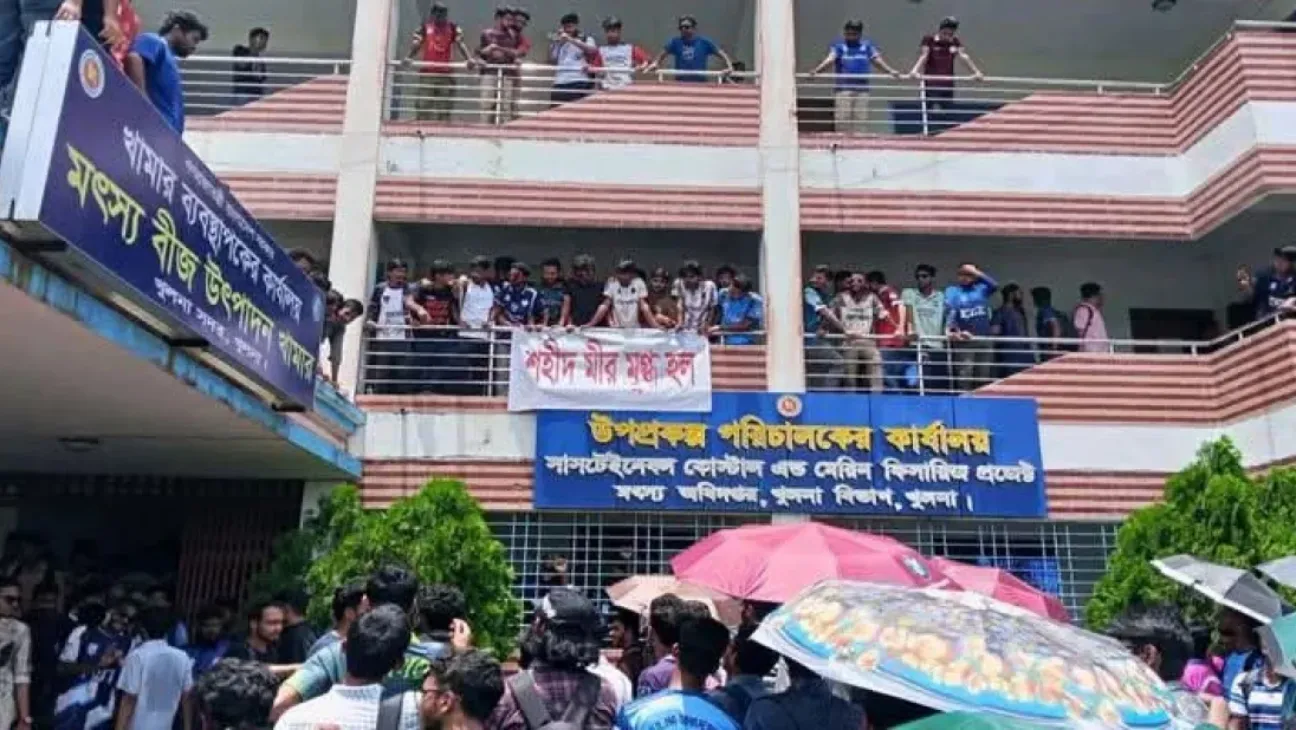Students at Khulna University took over the Gallamari Fish Seed Production Farm office on Sunday, renaming it “Shaheed Mir Mugdha Hall” as part of a long-running push for more student housing and campus facilities.
The demonstration commenced shortly after midday, with activists assembling at Hadi Chattar before proceeding to the central office of the farm. Upon arrival, they convened a rally and presented officials and personnel with a ten-minute demand to leave the site.
When the employees departed, demonstrators affixed a banner featuring the revised designation to the façade and initiated a series of chants. A sit-in occupation commenced and persisted until approximately fourteen hundred hours.
This confrontation marks the most recent phase of a sustained movement that has persisted for several months. In November 2024, students delivered a formal memorandum to the secretary for Fisheries and Livestock. In the intervening period, they constructed human chains, organized picket lines, and mobilized a succession of other actions.
University authorities have separately raised the issue with the Ministry of Education and the Ministry of Fisheries, seeking a transfer of the land. In March, Ministry of Fisheries and Livestock adviser Farida Akhter acknowledged the students’ concerns as reasonable and promised a solution. The situation has not changed since.
The contested parcel of land—10.35 acres situated within the campus perimeter—has emerged as the principal contention. According to student representatives and university informants, its retention complicates any durable resolution to the ongoing accommodation deficit, the proposed expansion of laboratory capacity, and the overall upgrade of the utility networks.
Khulna University enrolls upwards of 7,000 undergraduates but possesses just five dedicated residential halls. Consequently, on-campus lodging is available to scarcely 30 percent of the student body. This deficit further constricts the scope of field research in biophysical disciplines, where nearness to both experimental facilities and unobstructed outdoor domains is indispensable.
For the students, the renaming of the building is more than symbolic. It’s a way to make their demand visible, and perhaps, harder to ignore.









